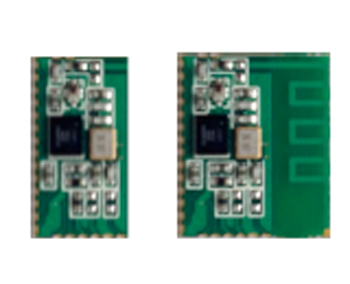SPK-EBM-A19 BLUETOOTH 4.0 Module
BLUETOOTH 4.0 Dual Mode BR/ EDR/ LE UART HCI Module
Description
Dual mode means it supports classic Bluetooth basic rate (BR) and enhanced data rate (EDR) operations as well as the new low energy (LE) standard.
EBMA19 is CSR single-chip radio and baseband IC solution for Bluetooth 2.4GHz systems including EDR to 3Mbits/s and Bluetooth low energy. BLE allows mobile devices to exchange simple data sets with very low consumption. Example use cases include watches, medical sensors and fitness trainers that can operate for many years from a small coin cell battery.
FEATURES
- Bluetooth Low Energy available with CSR8811WLCSP
- Bluetooth v4.0 specification
- Dual-mode Bluetooth®/Bluetooth low energy radio
- Can form part of Bluetooth v4.0 + HS system
- Class 1 or Class 2 Bluetooth power levels
- High-sensitivity Bluetooth and Bluetooth low energy receiver
- Full-speed Bluetooth operation with full piconet and scatternet support
- On-chip balun and minimal BOM
- Low-power selectable 1.2 to 3.6V I/O
- Integrated I/O and core regulators
- High-speed UART port (up to 4Mbps)
- Two PCM/I²S digital audio interfaces
- Support for IEEE 802.11 coexistence
- Dimensions:
14.5mm x 7.125mm x 1.8mm (EBMA19)
14.5mm x 12mm x 2.5mm (EBMA19, with printed antenna)
- Storage temperature range: -40ºC ~ +85ºC
- Operating temperature range: -30ºC ~ +85ºC
EBMA19 is CSR single-chip radio and baseband IC solution for Bluetooth 2.4GHz systems including EDR to 3Mbits/s and Bluetooth low energy. BLE allows mobile devices to exchange simple data sets with very low consumption. Example use cases include watches, medical sensors and fitness trainers that can operate for many years from a small coin cell battery.
FEATURES
- Bluetooth Low Energy available with CSR8811WLCSP
- Bluetooth v4.0 specification
- Dual-mode Bluetooth®/Bluetooth low energy radio
- Can form part of Bluetooth v4.0 + HS system
- Class 1 or Class 2 Bluetooth power levels
- High-sensitivity Bluetooth and Bluetooth low energy receiver
- Full-speed Bluetooth operation with full piconet and scatternet support
- On-chip balun and minimal BOM
- Low-power selectable 1.2 to 3.6V I/O
- Integrated I/O and core regulators
- High-speed UART port (up to 4Mbps)
- Two PCM/I²S digital audio interfaces
- Support for IEEE 802.11 coexistence
- Dimensions:
14.5mm x 7.125mm x 1.8mm (EBMA19)
14.5mm x 12mm x 2.5mm (EBMA19, with printed antenna) - Storage temperature range: -40ºC ~ +85ºC
- Operating temperature range: -30ºC ~ +85ºC






